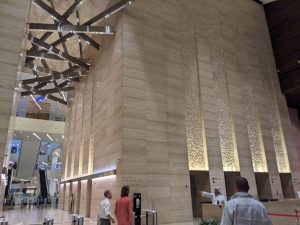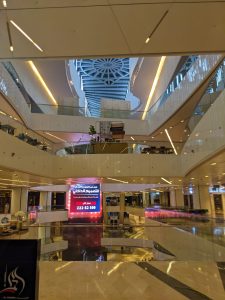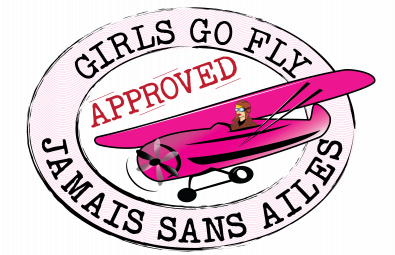After a good 6 hours of sleep, we had a nice Egyptian breakfast at the hotel and headed to the airport. Without any delays, we took off at 0500Z (which was 07:00 local time) and headed across the Red Sea. ATC asked us to climb to 9500 feet to remain out of military airspace. That took a while due to the extreme heat on the ground. The Archer DX doesn’t do well in hot climates. When we took off that morning, the exterior thermostat indicated 40 degrees Celsius (that’s 104 degrees Fahrenheit). The oil temperature in the engine as well as that of the gear box doesn’t do well above 95 degrees. So, we had to maintain a slow 250 FPM (feet per minute) climb to keep the engine as cool as possible. By the time we reached 5000 feet, we were able to bring our nose up a bit to reach 350 FPM. So, for all you math geeks out there, the climb to 9500 feet took us 33 minutes, considering Hurghada airport’s elevation is 52 feet ASL (above sea level).
During those long and heat-filled minutes, we were expecting at any point for ATC to come back to us and ask us to spiral upwards instead of keeping our heading. You see, ATC didn’t want us above the Red Sea or into Saudi Arabia airspace prior to reaching the military-free altitude of 9500 feet. We were lucky and that allowed us to do the trip to Kuwait City in 8 hours.
However, flying over the desert at 9500 feet proved to be almost as difficult as flying in bad weather. The desert actually doesn’t provide you with a definite horizon. When flying, you really need a horizon to know if your wings are level. I will try to explain what I was seeing as it’s really not that easy. I wish I had taken a picture, but I was a little too busy to even think of that.
Basically, at 9500 feet, I could see a blended horizon that had the orange-gold colour of the sand covering the ground for hundreds of miles ahead and then the clear blue sky, but the blended aspect of the sand carried so little precision that it wasn’t allowing me to keep my wings level. It was almost like trying to focus on one of those hypnosis images. You know, the ones where you are supposed to relax your stare and then an image will come out? Well, you can’t do that while flying and expect to stay upright! So, I asked my colleague next to me, “Should we climb higher to get above this sand-layer?” Now, I can just hear you saying to yourself. This woman is nuts. How can she think sand climbs to 9500 feet?! I know. It does sound strange, but remember, it’s not the sand that is climbing to 9500 feet, it’s the micro-particles and the never-ending dunes of sand, giving the pilot the optical illusion of sand being that high up into the atmosphere.
So, he said, “Sure. Try it.” I then proceeded to climb to 11000 feet. Once there, still no difference. The same blended horizon. I climbed to 12500 feet and again, same thing. We hadn’t gained in VFR (Visual Flight Rules), but we had gained a little airspeed as the tailwinds were slightly better there and there was less turbulence from the hot air rising from the ground. So, we stayed there for a while, but I knew that we couldn’t remain at that altitude too long without oxygen. Sure enough, after a couple of hours, we both started having a headache and therefore, we climbed back down to 10000 feet and flew at that altitude for approximately 3/4 of the flight.
To block out the heat and try to be a little comfortable, we used some very advanced protective devices, as you can see in this picture (notice my beautiful artwork?):

Yup! The boxes from our snacks really came in handy to block out the sun and since we were solely relying on instruments, we really didn’t need to look out the window! And if you’re wondering about detecting other aircraft, no need to worry. We were on a flight plan with ATC and we had ADS-B on board (a technology that allows us to see aircraft, their altitude and the direction in which they are moving).
When we were 100 nautical miles from arriving in Kuwait City, we started descending and man, did we ever get shaken around due to the unstable air below.
As we neared Kuwait City, the landscape started changing and more and more buildings could be seen. We were able to take down our sun-blocking boxes and fly without the use of instruments.
Unfortunately, it got hotter and hotter inside the aircraft. In case you didn’t know, we lose about 2 degrees Celsius for every thousand feet of altitude. So, of course, when descending, you regain those degrees. By the time we landed at OKKK (Kuwait International General Airport), we did what pilots of small aircraft always do on a hot day. We opened the right door to let some air in.
What a mistake that was. It literally felt as if we had just opened the oven door. The hot, dry air (luckily it wasn’t humid) took over the inside of the aircraft and we both gasped as we were taxiing to our parking spot on the apron. We tried to keep the door as shut as possible but that actually made it worse. My colleague and I were sweating profusely and we hoped that once we got out of the aircraft, it would be better. But nope! It was really hot.
Funny thing is when we stepped out onto the wing and told the marshallers that we found it really hot, they said, “Really? It’s cool now, it was much warmer earlier in the day!”. Ha! Goes to show you that it really depends where you come from. We landed just prior to sun down and it was still 47 degrees Celsius (117 degrees Fahrenheit) vs the intolerable 53 Celsius (127 Fahrenheit) it had been a few hours prior.
The first thought that came to mind was how tough it would be to climb out the following day. I knew from the Hurghada departure that the Archer’s engine and gear box were going to be put to the test once more.

We were so happy to have arrived early enough for once. I thought (as the neophyte that I am) that we’d get to the town early and have time to have a nice dinner and chill before going to bed.
Well, I was totally wrong! By the time the two other aircraft landed, they were topped up with Jet-A1 fuel, we had cleared customs, and got driven to the hotel, it was 21:30! So, we litterally dropped off our stuff in our hotel rooms and rushed to the huge mall nearby to find a place to eat. We looked for a Kuwaitee restaurant, to no avail. So, we ended up eating Thaï food.
What impressed me the most about Kuwait is the perceived wealth. The buildings, cars, and overall decor of the major city were spectacular. Another interesting fact is that due to the overwhelming heat during the day, the population does their outside activities late at night. The tennis courts across from our hotel were busy as of 22:00.
Interesting fact: The Jet-A1 fuel we bought in Kuwait was USD $0.50 per litre vs an average of USD $5.00 in the US. I even suggested (almost jokingly) that we put bladders on board to haul more fuel so we wouldn’t need to fuel up in Oman! But, of course, they wouldn’t take our credit cards and demanded cash payment. It cost us a good hour delay because they insisted on waiting for all three aircraft to be parked before starting to fuel them up. As luck would have it, Sam, who’s done these types of ferries quite often, had the cash on hand.
Flight time: 8 hours
Distance: 867 nm (1606 km or 998 statute mile)
Here are the pictures I took and don’t forget to check out the videos of the whole trip here











